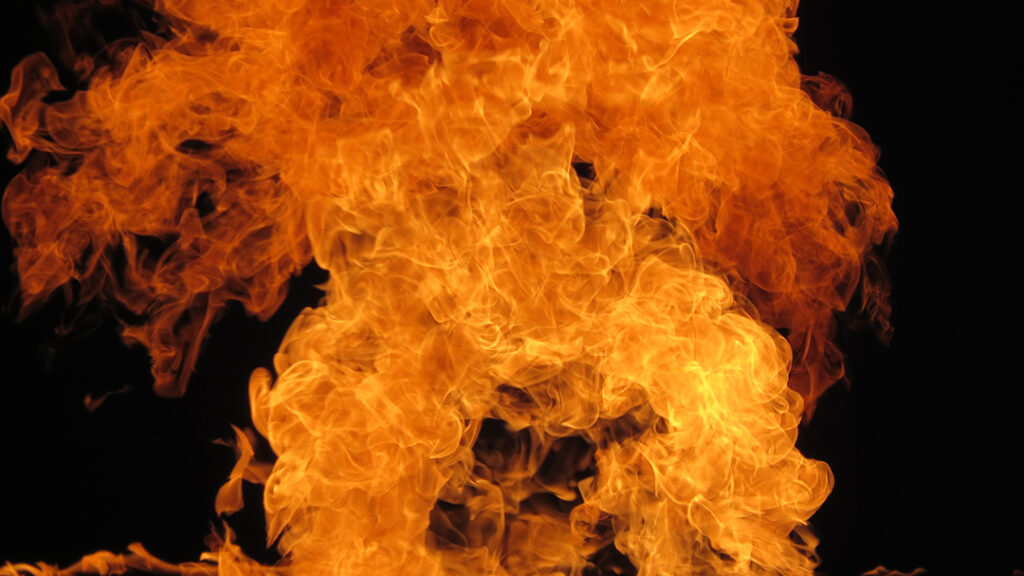Fire and brimstone: Belief in Hell in the 21st century
Fire and brimstone: Belief in Hell in the 21st century
In the UK, younger generations are more likely to believe in Hell than any other generation. Read this article to find out why.
In the past fifty years, many Western societies have become more secular. One might imagine that younger generations would have fully turned their backs on religious beliefs associated with the past. However, new research produced by the Policy Institute at King’s College London reveals that generation Z (born between 1997-2012) and millennials (1981-1996) in the UK are “significantly more likely to believe in Hell than baby boomers.”[1]
When broken down by age, 32% of those under 40 said they believed in Hell, compared with 18% of those aged between 59 and 77. Moreover, a belief in life after death was 51-53% for younger generations, compared with 35-39% for older people.[2] The research appears to show the emergence of an interesting phenomenon: for younger generations, a belief in God is declining but a belief in some type of afterlife still exists.[3]
This article will reflect on the research and also the three Abrahamic conceptions of Hell and the afterlife. Doing so will help to give an understanding of how these conceptions may have influenced the modern, “secular” understanding of the afterlife.
Hell in Judaism
Compared to other religions, the idea of hell is not central to Judaism and is only mentioned a few times in the Bible and in the Talmud.[4] Judaism also offers a range of views on the afterlife and does not have one specific doctrine. There are several biblical references to a place called Sheol. It is a spiritual place of darkness and waiting, where the spirit descends at death and could either be purified or sent for punishment.[5] The biblical books of Ecclesiastes and Job insist that “all of the dead go down to Sheol, whether good or evil, rich or poor, slave or free man” (Job 3:11-19).[6]
Some Jews believe that once in Sheol, a person’s soul could be purified and sent on to Gan Eden, which represents paradise or Heaven. Alternatively, a soul could be sent for punishment in Gehenna (Hell).[7] Gehenna originally was a valley south of Jerusalem where children were burned as sacrifices to the Ammonite god Moloch between the 10th-7th century BC. This imagery supplied the concept of ‘hellfire’ to Jewish and Christian eschatology.[8] [9]
Hell in Christianity
In Christianity, there is not one definitive Christian conception of Hell but, unlike in Judaism, the conception of hell in Christianity is a central belief. Broadly speaking, Hell is the place or state into which, by God’s definitive judgement, unrepentant sinners pass after death.[10] Christian theologians today generally understand Hell to be the logical consequence of rejecting union with God.
Not unlike Sheol in Judaism, in Roman Catholicism, purgatory is the place of purification in which the souls of those who die in a state of grace are made ready for heaven.[11] However, those who have rejected God go to Hell which is “[the] state of definitive self-exclusion from communion with God and the blessed.”[12] In Protestantism, Hell is the final destiny of those who do not receive salvation and where they will be punished for their sins.[13]
In the Christian Orthodox tradition, Hell is not a punishment but the way that Orthodox Christians individually experience the sight of Christ, depending on the condition of their heart.[14] Each person’s condition (e.g. repentant/unrepentant) is what determines whether you enter Heaven or Hell.
Hell in Islam
The conception of Jahannam (Hell) is also of central importance in the Islamic tradition. The major Islamic schools agree that a core part of a Muslim’s identity is to believe and look forward to the Last Day when God will bring his creation to an end, judge each soul and commit them to either paradise or Hell.[15] In the Quran, Jahannam is described as a place of fire, torment and physical and spiritual suffering.[16] Islam teaches that Muslims will be sent to Jahannam if they reject the teachings of the Quran or take no responsibility for their actions. Either of these would mean that they had failed Allah’s test. Vivid descriptions of Hell are used in the Quran as a way to stop Muslims from participating in sin.[17]
Before Muslims go to Jahannam, they go to Barzakh. This is a place where after death the soul is separated from the body.[18] The soul waits here before the Day of Judgement. According to Al-Ghazali, one the most prominent Islamic theologians, Barzakh may also be the place for those who go neither to hell nor to heaven.[19]
Conceptions of Hell in secular society
It would be a stretch to say that those who took part in the King’s College London research believe explicitly in the Abrahamic ideas of Hell. However, the concepts and imagery that exist within Jewish, Christian, and Islamic views of Hell have impacted wider, non-religious society’s understanding of the afterlife.
Journalist Vinson Cunningham explains how “our ancestors developed their ideas of Hell by drawing on the pains and the deprivations that they knew on earth.”[20] The pain and torment of Hell as depicted in religious texts have inspired artists and writers for centuries. Such individuals have been inspired by the religious depictions but their work is also shaped by their own understandings of suffering.
In the present, Bobby Duffy, director of the Policy Institute, explains that “our cultural attachment to organised religion has continued to decline in the UK – but our belief that there is something beyond this life is holding strong, including among the youngest generations.”[21] With a seemingly never-ending cycle of suffering in the present day, it is understandable that younger generations may be searching for meaning and are more likely to believe in a life after death. Perhaps for younger generations now, each person’s concepts of Heaven, Hell, and the afterlife more widely, are reflective of our individual hopes and fears for the present and the future.
Want to learn more about similar topics? Go to the EARS Dashboard.
Sources
[1]Hell, yes: younger Britons more likely to believe in damnation, study finds | Religion | The Guardian
[2] What the ‘hell’? Gen Z more likely to believe in damnation after death, finds study – Science News
[3] Hell, yes: younger Britons more likely to believe in damnation, study finds | Religion | The Guardian
[4] Orthodox Jewish view on hell
[5] Hell – Hades, Orphic Movement, Zoroastrianism, and Gehenna | Britannica
[6] Heaven and Hell in Jewish Tradition
[7] Gehenna | eschatology | Britannica
[8] A part of theology that is concerned with death, judgement, and the final destiny of the soul and of humankind.
[9] Gehenna | eschatology | Britannica
[10] Cross, F. L., Livingstone, E. (editors), The Oxford Dictionary of the Christian Church (Oxford University Press. 2005), article “Hell”
[11] Purgatory | Definition & History | Britannica
[12] What Is Hell? | Catholic Answers
[13] What Is Hell? | Catholic Answers
[14] Paradise and Hell in the Orthodox Tradition
[15] Hell – Destiny, Judgment, and Avoiding Rebirth | Britannica
[16] Seven Levels of Jahannam, Also Known As The Gates Of Hell In Islam
[18] The Life After Death (Barzakh) In Islam Based from The Holy Quran
[19] The Life After Death (Barzakh) In Islam Based from The Holy Quran
[20] How the Idea of Hell Has Shaped the Way We Think
[21] Hell, yes: younger Britons more likely to believe in damnation, study finds | Religion | The Guardian






